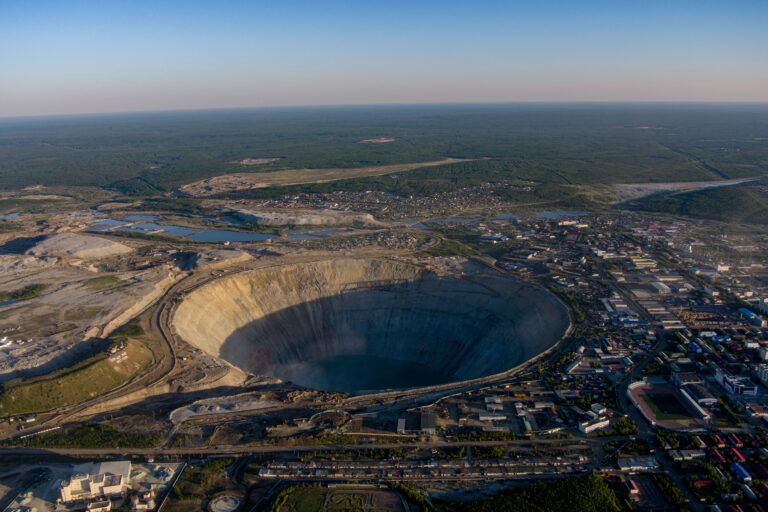
Diamonds have captivated human fascination for centuries, not only for their brilliance and beauty but also for their enduring symbolism of love, power, and purity. One of the key factors that contribute to a diamond’s allure is its clarity—a measure of how free a diamond is from internal inclusions or external blemishes. While high clarity is often prized, it is the imperfections within these gems that tell a unique story, revealing the remarkable journey each diamond has undergone from the fiery depths of the Earth to the polished brilliance you see in a jeweller’s display.
Understanding Diamond Formation
Diamonds are formed deep within the Earth’s mantle under extreme conditions of pressure and temperature. This process, which can take millions or even billions of years, creates the hardest natural substance known to man. However, the journey from formation to discovery is fraught with challenges, and it is during these formative stages that diamonds develop inclusions and blemishes. These imperfections, rather than diminishing a diamond’s value, add a layer of complexity and intrigue, making each diamond truly one-of-a-kind.
What Are Inclusions and Blemishes?
Inclusions are internal characteristics found within a diamond, while blemishes are external features on its surface. Both of these imperfections are considered when grading a diamond’s clarity.
- Inclusions: These can include tiny crystals of other minerals, internal fractures, or even small cavities. Some common types of inclusions are feathers (internal cracks), clouds (clusters of tiny crystals), and needles (long, thin crystals). These inclusions are often microscopic and may not be visible to the naked eye, but they play a significant role in determining a diamond’s clarity grade.
- Blemishes: Blemishes, on the other hand, are imperfections on the surface of the diamond. These can include scratches, nicks, or polish lines. While blemishes are typically less significant than inclusions, they are still considered in the overall clarity grading of the diamond.
The GIA Clarity Scale Explained
The Gemological Institute of America (GIA) developed a clarity grading system that is now the industry standard. This scale ranges from Flawless (FL) to Included (I), with several grades in between.
- Flawless (FL): No inclusions or blemishes visible under 10x magnification.
- Internally Flawless (IF): No inclusions and only minor blemishes visible under 10x magnification.
- Very, Very Slightly Included (VVS1 and VVS2): Inclusions are difficult to see even under 10x magnification.
- Very Slightly Included (VS1 and VS2): Inclusions are minor and can be seen with effort under 10x magnification.
- Slightly Included (SI1 and SI2): Inclusions are noticeable under 10x magnification and may be visible to the naked eye.
- Included (I1, I2, and I3): Inclusions are obvious under 10x magnification and may affect transparency and brilliance.
Understanding this scale helps consumers make informed decisions about which diamonds best meet their needs, balancing the desire for clarity with considerations of budget and personal preference.
The Beauty in Imperfection

While diamonds with higher clarity grades are often more expensive, many gem enthusiasts and collectors find beauty in the imperfections. Inclusions can tell a story about the diamond’s origin and the environment in which it formed. For example, a diamond with a small crystal inclusion might contain a mineral that was present when the diamond was forming, offering a glimpse into the Earth’s geological history.
Some inclusions, like feathers or clouds, can create unique visual effects, elevating a diamond’s uniqueness. Rather than viewing these as flaws, some see them as characteristics that add to the gem’s charm and individuality. After all, no two diamonds are exactly alike, and inclusions are one of the factors that contribute to this uniqueness.
Technological Advances in Assessing Clarity
In recent years, technological advancements have transformed how diamonds are evaluated for clarity. High-resolution imaging and 3D mapping technologies allow gemologists to examine diamonds in unprecedented detail. These tools detect even the smallest inclusions, offering a more accurate clarity assessment.
Additionally, some treatments can enhance a diamond’s clarity. Laser drilling, for example, can remove certain inclusions, while fracture filling can make internal fractures less visible. However, it’s important for consumers to be aware of these treatments, as they can affect the value and durability of the diamond. Ethical considerations also come into play, as transparency about treatments is crucial in maintaining consumer trust.
Choosing the Right Clarity for You
When selecting a diamond, clarity is just one of many factors to consider. While some may prefer a flawless diamond, others might be drawn to the unique character that inclusions can provide. It’s essential to balance clarity with other factors like cut, colour, and carat weight, as these all contribute to a diamond’s overall beauty and value.
For those who prioritise clarity, investing in a diamond with a higher grade might be the right choice. However, for others, a slightly included diamond can offer a more personalised and meaningful option without compromising on aesthetic appeal. It’s also worth considering that inclusions can sometimes be hidden by the diamond’s setting, allowing for greater flexibility in clarity selection.
Sustainability and Ethical Considerations
In today’s market, consumers are increasingly concerned with the ethical sourcing of diamonds. Understanding clarity can play a role in identifying ethically sourced diamonds, as lab-grown diamonds, which tend to have fewer inclusions, are often marketed as a more sustainable alternative to natural diamonds.
Lab-grown diamonds are created in controlled environments that replicate the natural diamond formation process. Because these diamonds are grown under consistent conditions, they often have fewer and more predictable inclusions, making them an attractive option for those seeking high clarity and ethical sourcing.
Moreover, the diamond industry has made strides in ensuring the ethical sourcing of natural diamonds through initiatives like the Kimberley Process, which aims to eliminate the trade of conflict diamonds. Consumers are encouraged to inquire about the origins of their diamonds and to choose retailers who prioritise transparency and ethical practices.
Conclusion
Diamond clarity is a complex and fascinating aspect of gemology that goes beyond the superficial pursuit of flawlessness. The imperfections within a diamond are not just blemishes; they are records of the gem’s natural history, adding depth and character to each stone. Whether one seeks a diamond that is free of inclusions or one that tells a story through its unique features, understanding clarity is key to making an informed and meaningful purchase.
By appreciating the science behind diamond clarity and the beauty in imperfection, consumers can select diamonds that resonate with their personal values and aesthetic preferences. In a world where perfection is often sought after, it’s important to remember that sometimes, it’s the imperfections that make something truly special.




